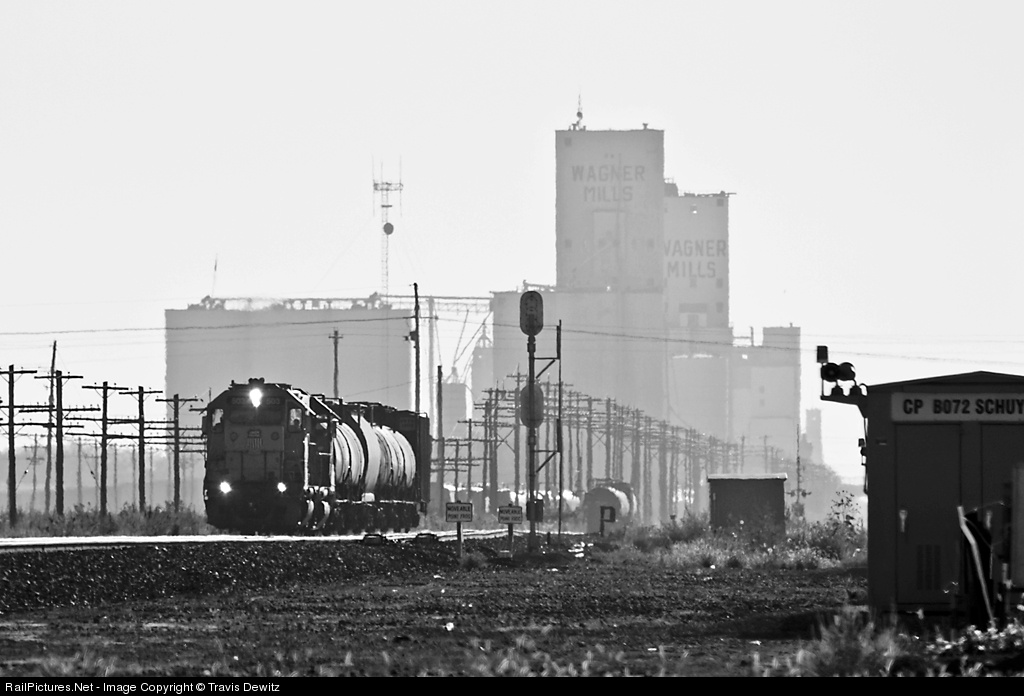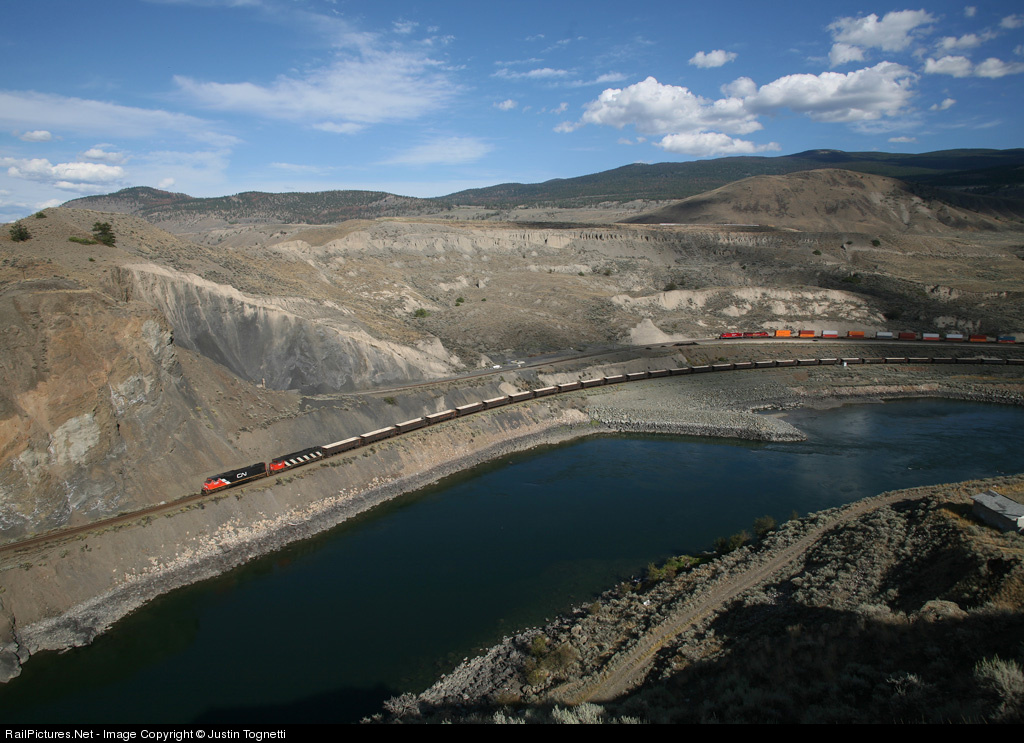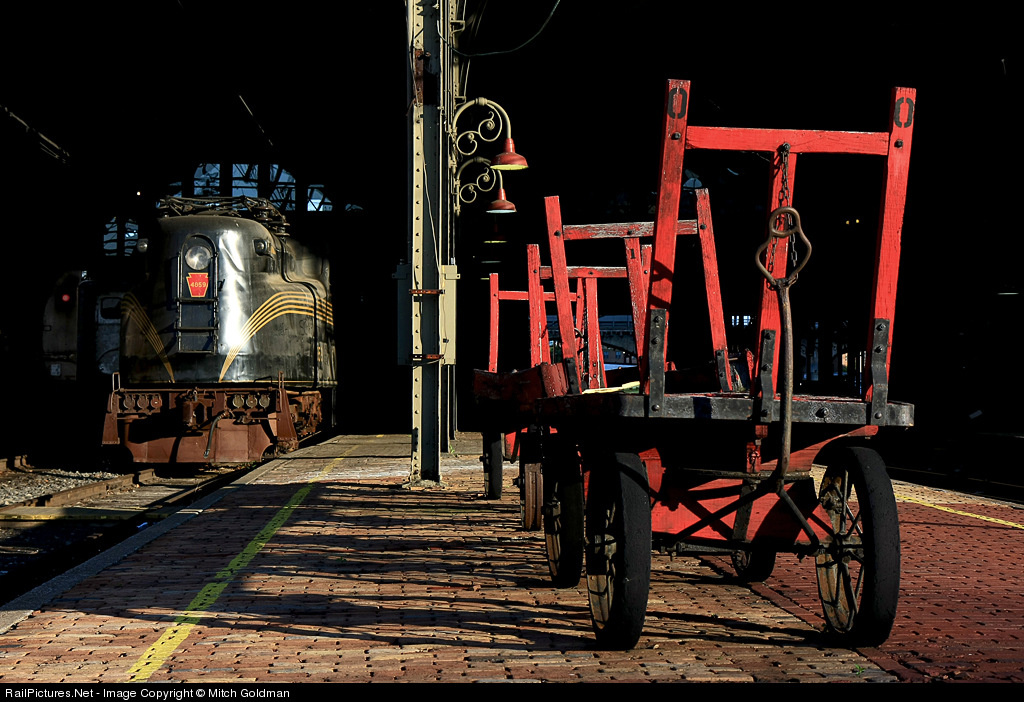 This post continues the one immediately below, discussing the images in the Trains magazine publication "100 Greatest Railroad Photos."
This post continues the one immediately below, discussing the images in the Trains magazine publication "100 Greatest Railroad Photos."The final section of the publication, "Environment," features not just scenic shots but also shots that show the railroad in its environment. Some or many of the compositions have much in common with what one might call the standard rail scenic shot, done well.
The Jilson numberboard closeup (page 92) depicts cold weather railroading nicely; I like the streaks of moving snow in the headlight beam. The Acton glint shot is nice but to my eye standard. The unusual frosty look in the Holmes WP shot makes up for it being a standard wedgie, and does not distract from the Stan Kistler under-the-cars view, which is creative and has nice BW contrasts, taking advantage of an extremely sharp (and temporary) curve.
 On page 98 Philip Weibler's Chicago commuter scene, in the single train, the many tracks, the snow, the soft focus, reminds me of a classic photography scene from maybe a century ago by a big name photographer whose name I cannot recall. So I will insert that information down the road when it finally comes back to me. [EDIT: It came to me! It's the shot shown here, by Alfred Steiglitz, called "New York Central Yard" from the 1900s. Is it similar? Well, maybe, maybe not, but one made me think of the other. Link to a captioned version here.]
On page 98 Philip Weibler's Chicago commuter scene, in the single train, the many tracks, the snow, the soft focus, reminds me of a classic photography scene from maybe a century ago by a big name photographer whose name I cannot recall. So I will insert that information down the road when it finally comes back to me. [EDIT: It came to me! It's the shot shown here, by Alfred Steiglitz, called "New York Central Yard" from the 1900s. Is it similar? Well, maybe, maybe not, but one made me think of the other. Link to a captioned version here.]I don't happen to find the Tehachapi shot "magical" in part because I have seen versions of that shot a number of times, and in part because streaks of light winding around make it a fine technical work but not particularly artistic. The shot doesn't move me. The Hellman steel mill shot, page 104, is a well-done view of the inner workings. Scott Lothes' Hawks Nest shot is extremely well done, with the dawn sky reflecting in the river and the patches of ice on the water providing added texture.
I'm not a fan of the Rasmussen caboose loop shot; it seems out of balance. It documents the loop well but that is all. The other shots do little for me, and the closing Solomon sunset shot is too simplistic a composition to catch my eye despite the beautiful colors.
Can you tell I am not moved by this set of shots? What is lacking? The main thing is that the compositions are not interesting - there is a low weight on artistry as compared to documentation, especially a problem for the section of the collection where documentation is least important. Although there are relevant documentation shots, such as the Charles Brewster shot of a train going up Saluda (page 107). So the issue is really that I am expecting to see more on the artistic side, whether classic landscape or otherwise, and I am not seeing it. (Toward that end, where is the fantastic taconite yard shot by Dave Schauer with the steam rising off the cars and spreading over the yard? Unbelievable that one is not considered one of the top 100 appearing in Trains!) As a secondary matter, I don't see much in the way of vivid color (which I will admit a bias towards) or interesting light.
I'll do a summary in a fourth post.















































